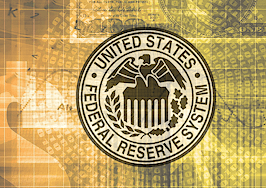- Last week, the Federal Reserve reduced the slope of future rate forecasts and emphasized overseas instability over U.S. risk of inflation.
- The Fed today has some concern that the oil and commodity downward shock of the last two years will reverse, and/or the fall in import prices caused by a strong dollar.
- The Fed’s decision last week was big in part because every measure of core inflation began to turn up at the end of last year.
Last week, I issued a “rate warning,” and then the Fed surprised after its meeting — not by standing pat, which everyone expected, but by reducing the whole slope of future rate forecasts and emphasizing overseas instability over U.S. risk of inflation.
I heartily concur with the Fed’s decisions. However, here in the housing business, concerns continue.
[graphiq id=”8vQXl6cCXvD” title=”Federal Funds Rate vs. Inflation” width=”600″ height=”605″ url=”https://w.graphiq.com/w/8vQXl6cCXvD” link=”//www.graphiq.com/wlp/8vQXl6cCXvD” link_text=”Federal Funds Rate vs. Inflation | Credio”]
First, for rates to go lower, we’ll need more bad stuff to happen overseas — and we may not get that soon, or bad enough.
Meanwhile, if U.S. inflation does change and trend upward, then the Fed will abandon the outside world and tighten up interest as necessary.
What inflation is (and isn’t)
Any estimate of future inflation must begin by revisiting what inflation is and isn’t, especially after so many years of overestimated and underperforming inflation, and in a time fraught with crackpot theories.
Inflation is “too much money chasing too few goods and services.” Milton Friedman: “Inflation is first and always a monetary phenomenon.”
The Fed has hosed a lot of money into the system to pull us out of the Great Recession, but for it to be “too much” money, two things must be evident: wages growing too fast, or credit growing too fast.
We have neither. Not even close.
There is a non-monetary cause of inflation: a “price shock,” which can result in “cost-pushed” inflation. Repeated example: a sudden jump in oil. The Fed and all other sensible parties thus focus on “core” inflation excluding volatile food and energy from overall.
Cost-pushed inflation tends to disappear quickly after the cost shock fades, but the Fed may have to react to prevent the cost shock from turning into the deadly “wage-price spiral.”
The Fed today has some concern that the oil and commodity downward shock of the last two years will reverse, and/or the fall in import prices caused by a strong dollar. We will all watch those forces, but there is no sign of upward reversal today.
What will buyers and sellers think?
Many sensible people are worried about the measurement of inflation because so many people in and near markets run scare stories and conspiracy theories.
Here is that list of theories and their counters.
In an age of great opposition to government and suspicion about it, be reassured: Inflation stats are not cooked. Thousands of honest and diligent people inside and outside the government work on the measurements using several different methods. Any stove-top job would stand out.
Others are suspicious of the inflation basket of goods and services and its continuous adjustment by “hedonics” — a fifty-dollar word to describe the price reduction by product improvement.
Example: In 1977, I bought my first color TV, a 26” Quasar cathode ray tube beast with manual controls. Skin-tones often resembled Spock’s light green. The $375 I spent then is roughly $1,200 today — and today we can buy a slim, LED, 1080p, 26” for $200, and it will have access to hundreds of channels and most movies ever made for another $50 per month.
Hedonics are real. Cars, computers, phones … all vastly improved, inconceivably so, at lower prices.
Food costs more. I am still stunned by the one-dollar lemon. I worked in grocery in the summer of 1964 and stamped bags holding heads of iceberg lettuce: nineteen cents.
The lettuce is the same. Nineteen cents today is a dollar, but lettuce is still lettuce, and $1.40. That’s inflation.
The toughest part of measurement? The weighting of the market basket. We buy clothes, and we pay for housing. Clothing is barely 2 percent of CPI, but housing is 25 percent.
Today we have a bit of a price shock in both housing and medical care — housing is scarce in many markets, rents there (but not everywhere) rising fast; and medical care and insurance have been on a run the envy of the Corleones. That’s not inflation.
The Fed’s decision last week was big in part because every measure of core inflation began to turn up at the end of last year. All at or above 2 percent core target, except for the Fed’s favorite, “personal consumption expenditure deflator,” and it’s pushing 1.7 percent.
If this recent move in inflation recedes, then I’ll withdraw the rate warning. I hope, I hope.
Lou Barnes is a mortgage broker based in Boulder, Colorado. He can be reached at lbarnes@pmglending.com.








